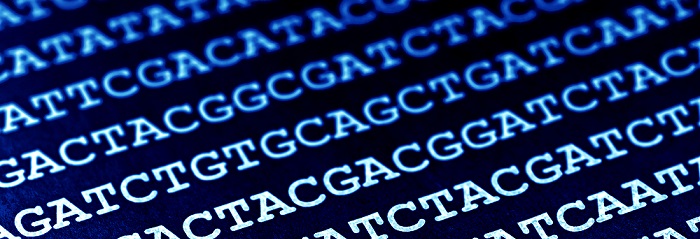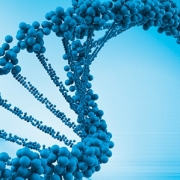Your invaluable genome
Genomic data is the currency of a new era of medicine that promises incredible advances. Here, bioinformatician Nana Mensah explains why
In the race for greatest medical revolution of the 21st century, genomics is undoubtedly a frontrunner. Those outside of the field, however, might still find themselves wondering: ‘what’s all the fuss about?’ There are many reasons why genomics is revolutionary, but data is at the root of it all. As genomics is used more and more in mainstream care, it becomes ever more important to understand the great power and value of this new kind of data, writes Nana Mensah.
From cell to computer
While the word ‘genome’ refers to the entire sequence of DNA of an individual organism, the term ‘genomic data’ refers to its digital representation – a large data file resulting from the sequencing process.
First, DNA from patient samples is read by high-throughput sequencing equipment, which outputs digital files containing observations of each fragment of DNA. Then, this sequence data goes through the bioinformatics process, where it is catalogued and analysed with a particular clinical question in mind. At the third stage, any identified genomic variants are interpreted by clinical scientists, who consider their significance within the context of the referral. The final output is a report that informs clinical decisions.
It’s important to consider that any mention of genomic data could actually refer to either raw sequence output, informatics pipeline results, or the report that results from clinical interpretation.
Clinical value
Genomic data can be used both to identify those at risk of developing specific diseases, as well as to identify the cause (sometimes for the first time) of diseases with a genetic component. This data has diagnostic, prognostic and treatment value in clinical settings, hence the impetus to mainstream genomics across the health service – to ensure everyone benefits.
The breadth of medical specialisms impacted by genomics is astounding. While rare disease and cancer are the main priorities, there is no shortage of applications for genomics in cardiology, neurology and ophthalmology, to name just a few.
Data sharing is a hot topic in this field with good reason. The ability to make a diagnosis based on the effect of a genomic variant may be improved if the same variant has been seen before in other individuals – thus contributing to the weight of evidence. Your genome therefore has immense clinical value, not only to you but to your wider family and to others, too.
Finally, genomic data is a static resource that can be revisited and re-analysed over time using new methods or in light of new knowledge. This means that a genome that has previously failed to yield a diagnosis may be able to do so at a later date, without the need for the patient to return to the clinic.
Research value
Clinical genomics relies on databases of known gene-disease associations. To the researchers that build these, genomic data has value only when additional information about each patient is available. This information, known as metadata, typically includes observable disease traits (known as ‘phenotypic information’). Without both data types the valuable links cannot be made.
Complex conditions cannot be accounted for by DNA sequences alone: the molecular processes that lead from the DNA blueprint to disease are affected by multiple factors. Today, other ‘omics’ technologies can measure those processes: epigenomics for regulation, transcriptomics for gene expression, proteomics for DNA translation, and metabolomics for the products of biochemical processes.
Researchers are working to improve the clinical applications of these technologies which, combined with advanced statistics, will help improve accuracy of diagnoses and interventions.
Personal value
Today, an individual may choose to undergo genetic testing themselves, outside of a healthcare setting. Direct-to-consumer genetic testing (DTC-GT), as it’s known, is a growing industry that brings commercial DNA profiling reports to customers. Providers claim to offer customers insight into family history, health, diet and more.
It is worth bearing in mind that commercially available tests typically interrogate fewer genomic positions than those ordered in clinical settings. They are also often offered in the absence of psycho-social support, meaning genetics services receive more queries than ever before – often in the absence of information that is deemed to be clinically actionable. Though the practice of DTC-GT raises many ethical questions, it is undeniably part of the modern healthcare landscape and steps must be (and are already being) taken to accommodate it.
Economic value
The UK genomics market has been estimated to be worth nearly £1 billion, including the value of sequence generation (£500m), clinical interpretation (£32m) and genomics applications (£45m). These figures are from 2015 and, with the rapid growth of the still-immature industry, they are likely to be gross underestimates today.
In several areas, the health service also stands to save money by implementing genomic testing. Individuals with undiagnosed rare diseases typically face a years-long ‘diagnostic odyssey’ that sees them endlessly shuffled through the healthcare system; analysis of whole genome sequences may significantly speed up diagnosis and save countless costly investigations. The £6m-£9m funding for national Informatics and Genomic Laboratory Hub solutions is a push to realise this value, and with the downward trend of sequencing costs, the economic value of this technology to medicine will continue to improve.
The holy grail: shared data and privacy protection
To advance our knowledge of the genome’s involvement in disease, researchers require permission to use an individual’s genomic data beyond the realms of the original clinical question. The value of genome research to healthcare is so great that privacy laws now acknowledge the ethical imperative to share genomic data. Article 4(13) and Recital 34 of the recent General Data Protection Regulation (GDPR; EU Directive 95/46/EC) specify that genetic data is a new special category of personal data, and outline extended scope for such data to include the analysis of all biological samples.
The GDPR explicitly grants a research exemption on the secondary processing of sensitive data, whereby patients do not need to be approached again for consent. This is at the discretion of individual EU member state laws and requires that any research carried out is justifiably in the public interest. The exemption essentially streamlines the ability to make clinically useful discoveries from genomic data.
The need for confidential clinical data to be coupled with processes that protect patient privacy is widely acknowledged. GDPR now makes it a legal requirement for data controllers to set up privacy safeguards, providing assurances for patients while maximising the potential rewards for public health. Many clinical research initiatives, such as the 100,000 Genomes Project, also strip genomic data of personally identifying information. Researchers are then subject to identity checks and an independent access request review before being permitted to analyse genomic data in a secure, monitored environment.
Working together for better value
Ultimately, for patients to make an informed decision to consent to genomic data sharing, healthcare professionals should provide a clear explanation of how their data will be managed. It will therefore be vital, as the Genomic Medicine Service gets underway, that we feel equipped to have that conversation.
Genomics is a pervasive technology and we are only just realising the impact of genomic data on healthcare. Research in the field is fast-advancing and the industry shows no sign of dwindling. One thing is for sure: genomic data is the currency of this revolution in medicine, and as genomic testing establishes itself in clinical care, our findings will continue to have clinical value in ways we cannot yet predict.
Nana Mensah is a trainee clinical bioinformatician at Guy’s Hospital in London.
–









